Brightspace Accessibility
Alternative Text, Closed Captions, Hyperlinks and External Content
On this page:
Alternative Text
Alternative text is a text description of visual information.
To add an image, select the Image tool on the Brightspace Editor toolbar.
When adding an image, you will be prompted to add alternative text:
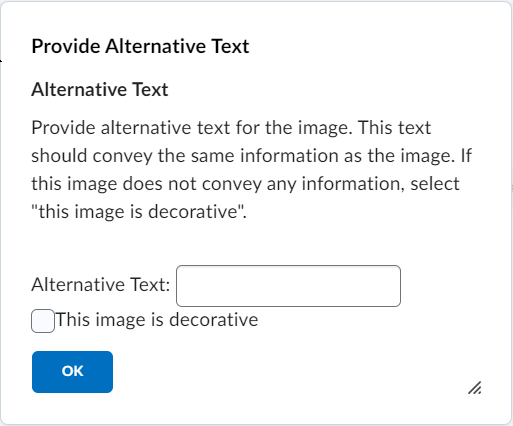 Enter a concise description in the Alternative Text: field. Mark images that do not convey information may be marked as decorative by checking This image is decorative and screen reader software will ignore the image. Note: this method limits alt text to 200 characters.
Enter a concise description in the Alternative Text: field. Mark images that do not convey information may be marked as decorative by checking This image is decorative and screen reader software will ignore the image. Note: this method limits alt text to 200 characters.
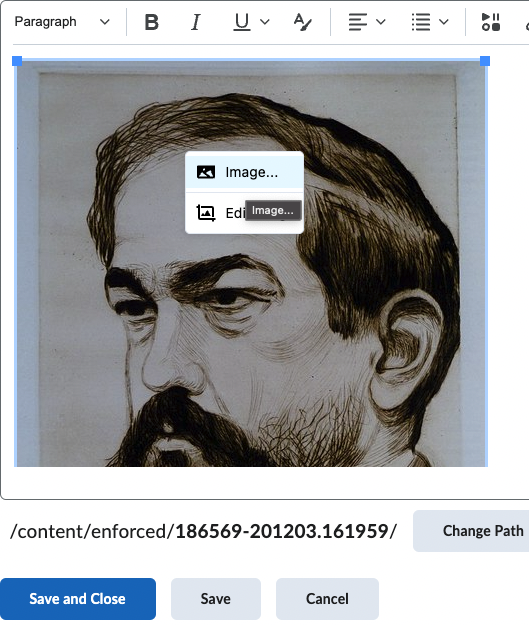
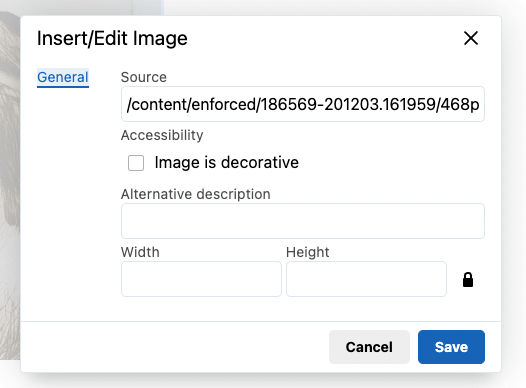
Note: adding alt text using this method does not impose a character limit.
The Accessibility Checker will display “Images must have alternative text” if alt text is not added. Alt text can also be added from inside the accessibility report panel.
Consider why each image has been included. Some images may be a useful way to break up blocks of text and reinforce information. However, avoid adding numerous decorative images as this will unnecessarily clutter the content pages.
Read more about alternative text.
Image Titles
Expand to learn about image titles
By default, Brightspace will create an image title from the alternative text.[1] The title appears in a tooltip box when the mouse cursor hovers over an image in Brightspace:
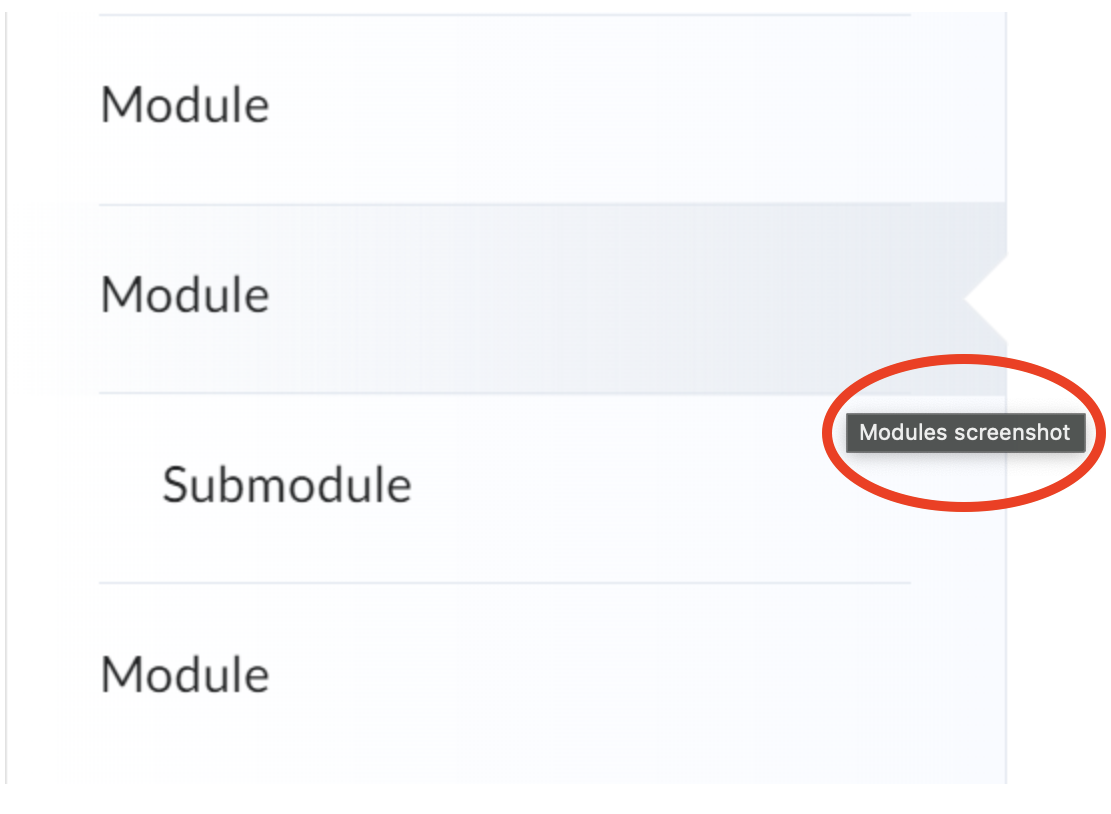
To modify the title of an image, and in turn the tooltip:
- Select the image and open the Other Insert Options menu on the Brightspace Editor toolbar.
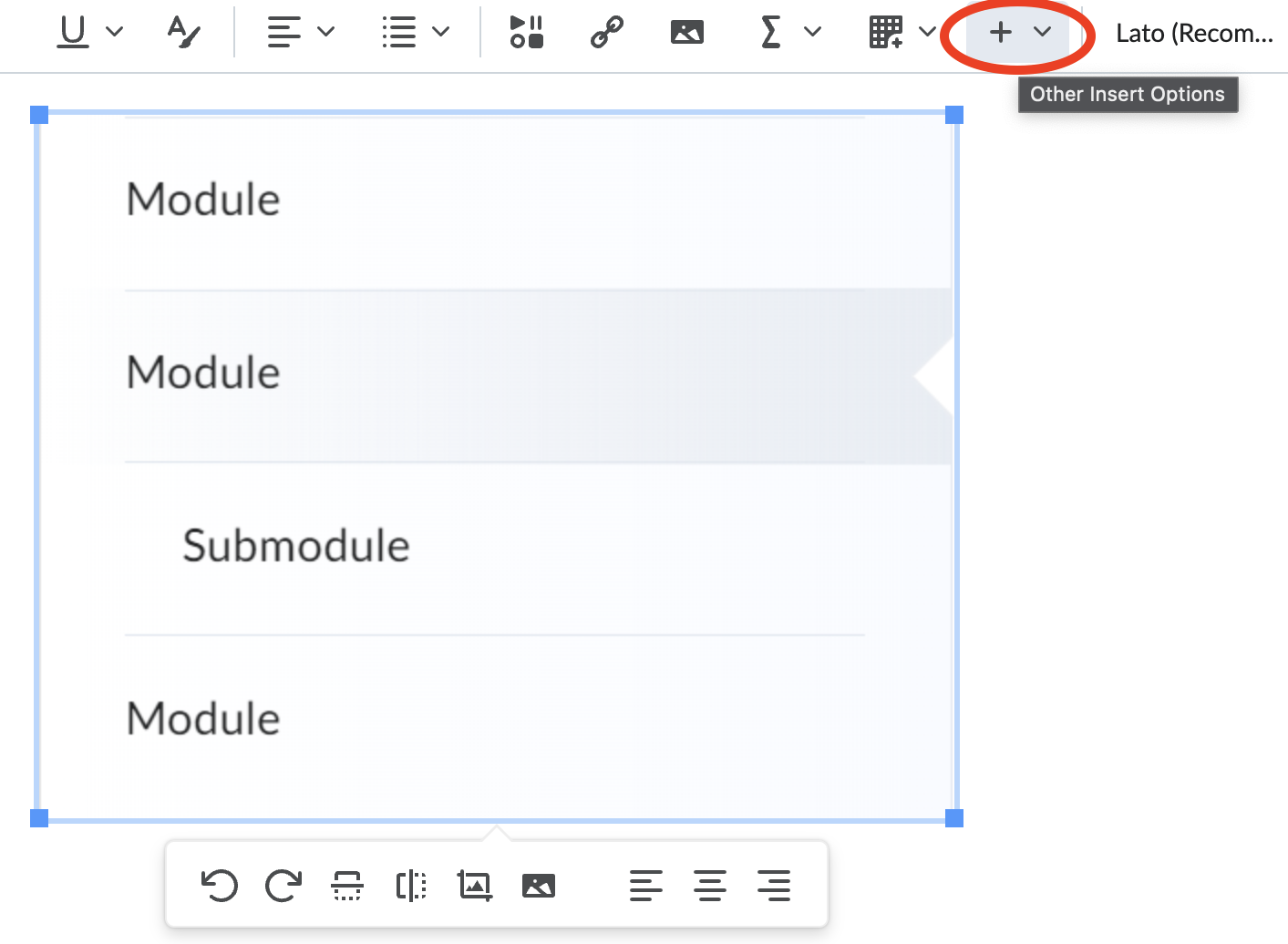
- Select Attributes.
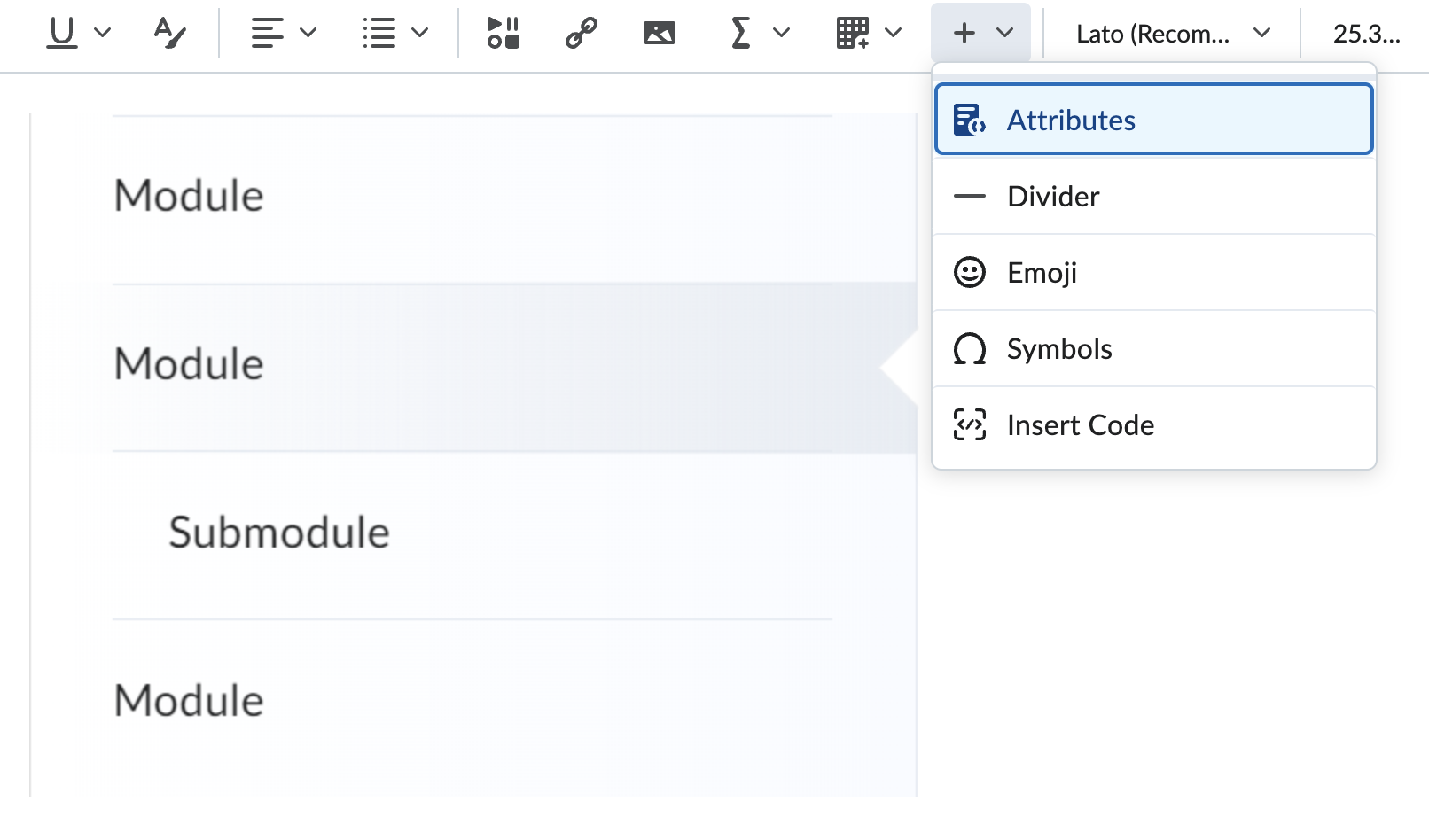
 In the Attributes window, type a title in the Title field and click Create.
In the Attributes window, type a title in the Title field and click Create.
Figure Captions
Brightspace supports adding figure captions to images. The most straightforward method to add figure captions is to copy from the Images template. For more, consult these instructions on using image templates in Brightspace.
Closed Captions
Embedded or linked videos must be close captioned. Audio recordings should have a transcript attached. Ensure media does not automatically play. Use Kaltura instead of Brightspace’s built-in video player for easier captioning, sharing, and versioning.
Captioning uploaded video files (not recommended)
For easier captioning, sharing, and versioning consider hosting video files on Kaltura Mediaspace. Should you require assistance captioning a video file, Kaltura Mediaspace is the preferred platform as caption editors will not be able to access video files inside Brightspace.
However, to caption videos uploaded to Brightspace:
- Navigate to the video file and select Edit Video.
- Scroll down and select Advanced Editing.
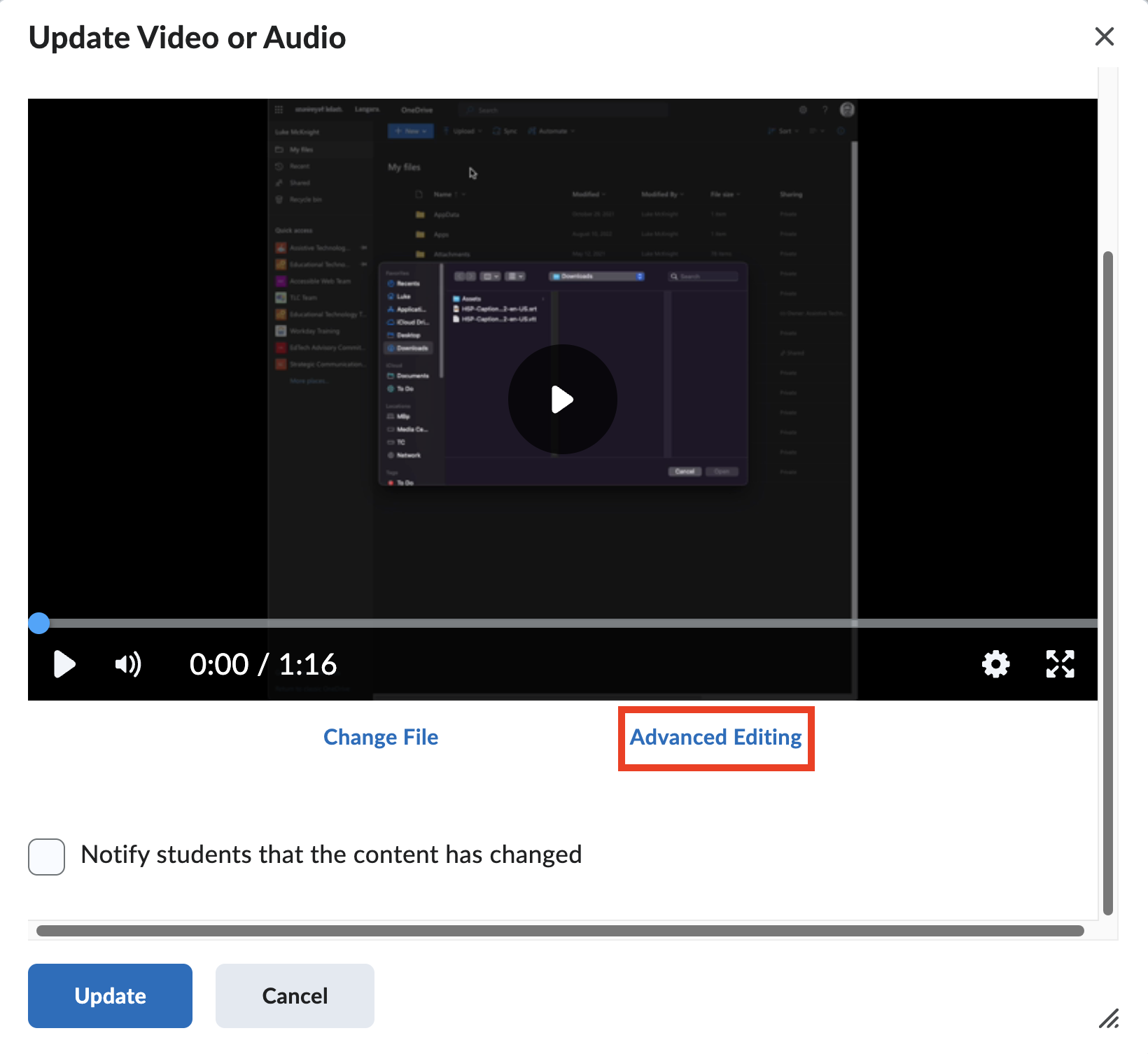
- Move to the Closed Captions tab and choose Auto-Generate.
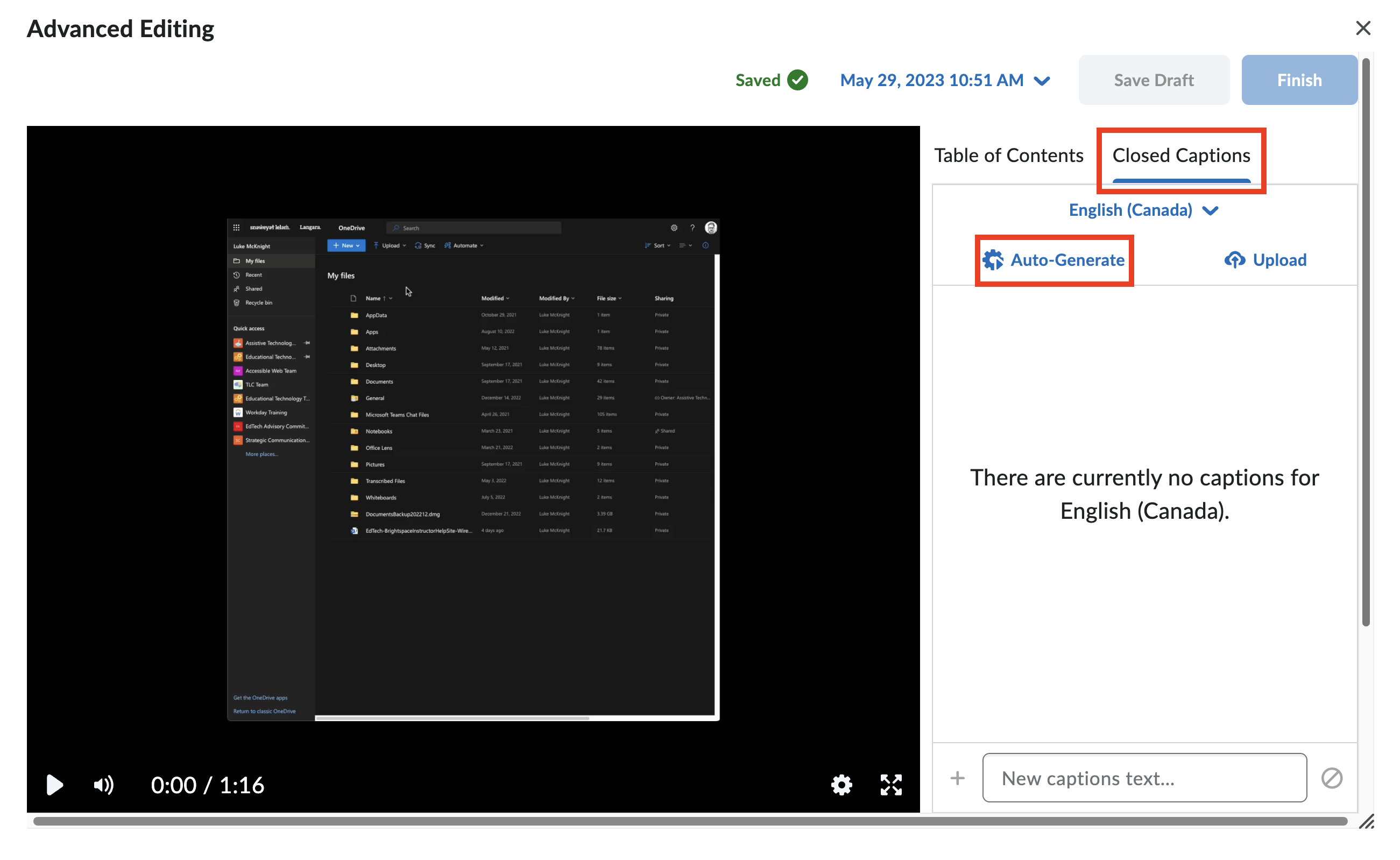
- Once captions are generated, edit for accuracy and select Finish. Wait for the changes to process and then close the dialog window by selecting the Close this dialog x in the top right. Select Submit to finalize any changes .
For more information, consult the closed captioning chapters earlier in this handbook.
Descriptive Hyperlinks
When linking to a website, use meaningful hyperlink text. Linked text should be descriptive, concise, unique and visually distinct. Do not use bare URLs. To learn more about writing link text, consult the accessible links chapter of this guide.
Use default styling of blue font and underlined text for links.
Consider the accessibility of the resource you are linking to. Also, indicate that you are linking to a video, file, or interactive element.
Adding Hyperlinks in Brightspace
- Highlight your descriptive text.
- Select the link icon (looks like a small chain).
- Or, press Control (Command on macOS) and K.
- Paste the URL in the dialog that appears.
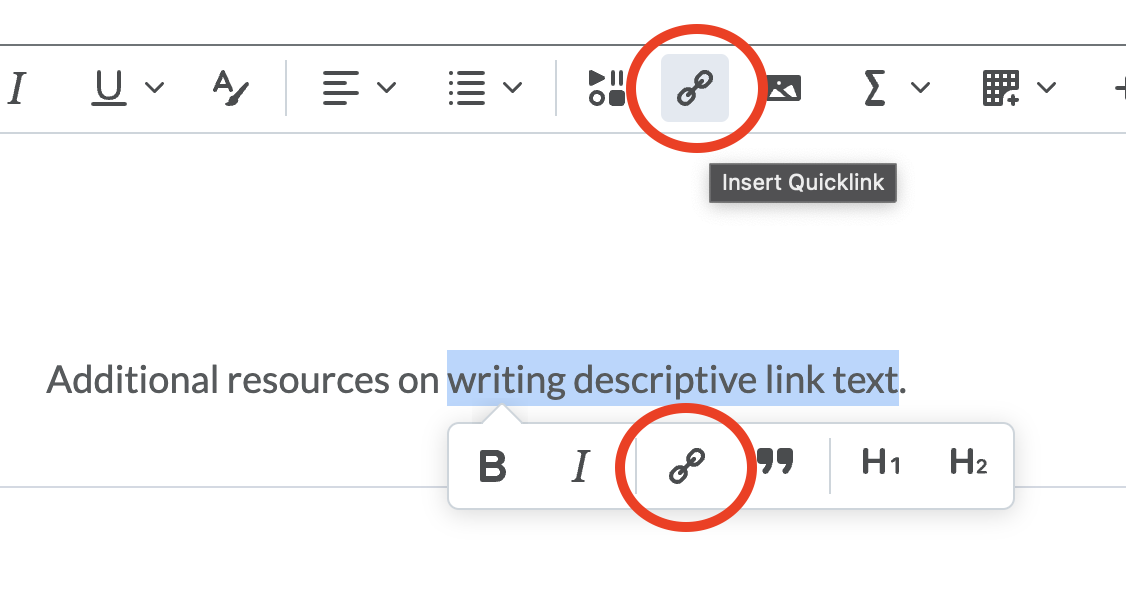 Additionally, you can insert a link via the format toolbar:
Additionally, you can insert a link via the format toolbar:
- Choose the Insert Quicklink button and select URL.
- Paste the URL in the appropriate field and add your descriptive text in the Title field.
- Select Insert.
Before linking to external content, consider the accessibility of the resource. Try to choose the most accessible resource available. The University of Washington Disabilities, Opportunities, Internetworking, and Technology centre suggests avoiding PDFs and providing PDFs only as a secondary source of information.
Uploaded Content
Uploaded documents (Word, PowerPoint, etc.) must be checked for accessibility.
- The authors do not believe this to be best practice and have asked Brightspace to address this unexpected behaviour. ↵
Assistive technology software that reads content aloud and helps blind and low vision users navigate and interact with their computers.
An image caption is text that provides supplemental context, explanation, or commentary about an image. Image captions generally appear below the image. Image captions may include comprehensive details as well as supplemental information related to the image, such as citations, photo attribution, cultural context, historical or scientific information about the subject, complex data from charts, etc. Unlike alternative text, figure captions have no length limit. Figure captions are accessible and available to all users, whereas alt text is only available to assistive technology.
A text equivalent of audio content in a video, displayed synchronously. Closed captions are toggled on or off by viewers, as opposed to open captions that are burned into the video and always displayed.

